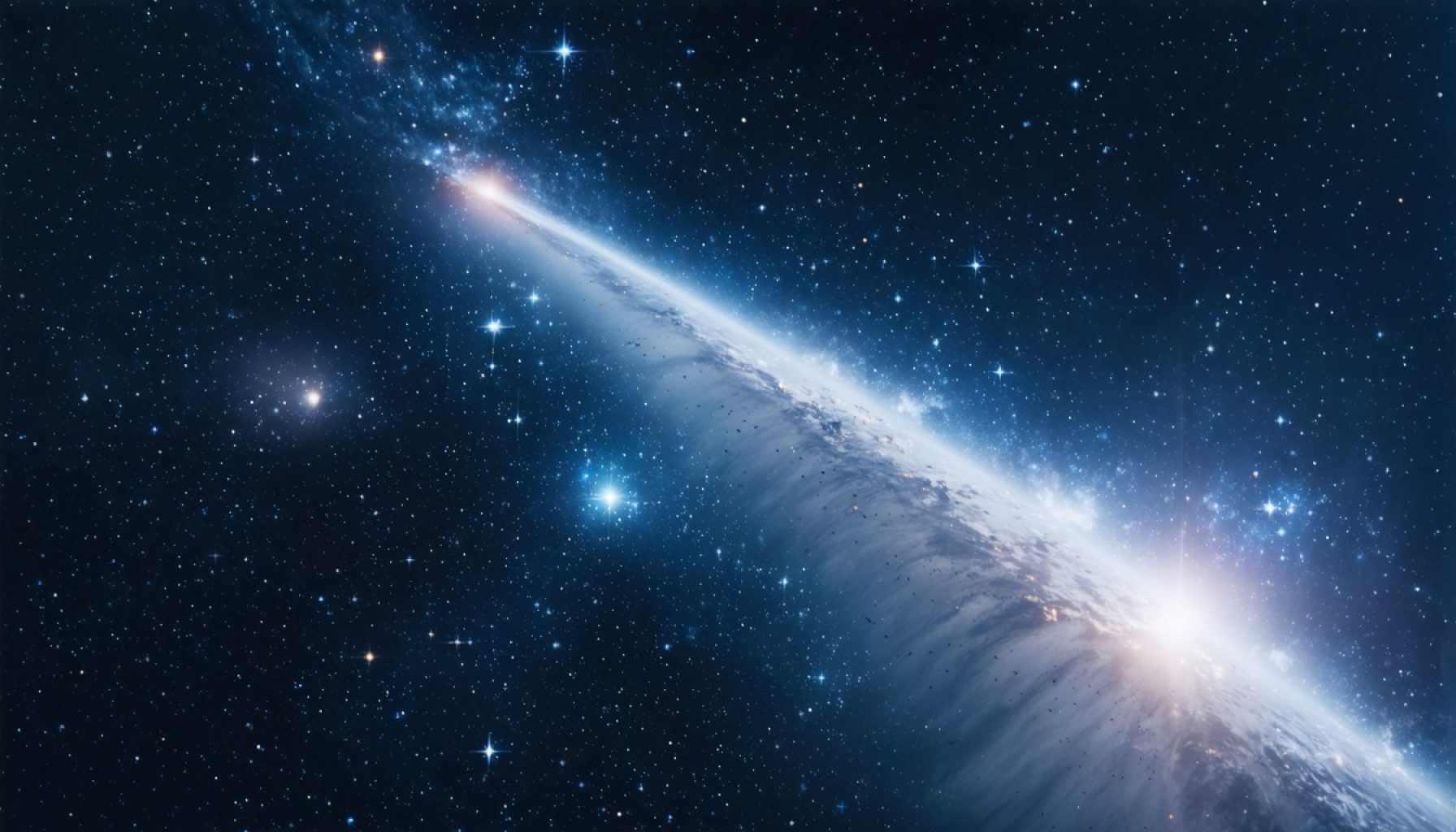- Four space tourists embarked on a pioneering SpaceX Dragon mission funded by Bitcoin entrepreneur Chun Wang.
- The mission traced a never-before-charted path over both the North and South Poles, offering unique vistas of Earth.
- Passengers included Norwegian filmmaker Jannicke Mikkelsen, German robotics researcher Rabea Rogge, and Australian polar specialist Eric Philips.
- The crew enjoyed 360-degree views from a domed window, witnessing polar landscapes and orbiting sunrises.
- This mission represents a new frontier in private space travel, emphasizing imagination and limitless exploration.
- The successful completion marked the first Pacific Ocean splashdown of a crew in 50 years, highlighting ongoing curiosity and exploration.
Against the black velvet of the cosmos, four space tourists hovered high above Earth, tracing a path rarely marked by the human eye. The adventure began with a fiery ascent from NASA’s Kennedy Space Center, setting the stage for a stunning odyssey where the extraordinary becomes routine.
This was the mission of a lifetime—a voyage funded by Bitcoin entrepreneur Chun Wang, who orchestrated a groundbreaking expedition aboard a SpaceX Dragon capsule. Unlike previous endeavors, this mission bore a unique hallmark: gliding over both the North and South Poles, their vivid white expanses stark against the swirling blues and greens of the planet. This path had never been charted by a human crew before, making it a pioneering feat in space exploration.
The capsule, replete with a domed window designed to offer 360-degree panoramic views, became a celestial gondola with a view unparalleled in its grandeur. Inside, the passengers marveled at the world below—an icy armory of glaciers and the vast, silent deserts of snow-stretched endlessly before them. Each orbital sunrise bathed the scene in a gentle gold, a reminder of Earth’s ever-changing beauty.
Wang, originally hailing from China but now a Maltese citizen, curated the crew with precision. His companions—Norwegian filmmaker Jannicke Mikkelsen, German robotics researcher Rabea Rogge, and Australian polar specialist Eric Philips—were chosen for their unique perspectives and talents. Together, they shared an adventure that felt as if reality had been reshaped, approached its boundaries, and ultimately transcended them.
Their journey created dramatic scenes: Mikkelsen capturing the vivid dance of light over ice fields; Rogge documenting the ceaseless stretch of the polar “deserts” from orbit. Philips, too, found echoes of his terrestrial explorations amid the vast white expanses of the poles, seen now from an impossibly high vantage.
This mission signals a new era of space travel, one where the boundaries of exploration are limited only by imagination. The group, upon splashing down in the Pacific Ocean—a first for a crew in 50 years—returned with a singular testament: that our thirst for discovery has only just begun to be quenched.
Their safe return did not merely close a chapter on this mission but opened a new one in the annals of human curiosity and exploration. The key takeaway here is clear: as private space exploration becomes increasingly bold and accessible, the only limit to what we can witness and achieve is how far we dare to venture.
Unlocking the Future: How Private Missions Are Paving a Bold New Path in Space Exploration
A New Frontier in Private Space Travel
The recent voyage of a SpaceX Dragon capsule, funded by Bitcoin entrepreneur Chun Wang, marks a significant milestone in the realm of private space exploration. As commercial endeavors in space become more frequent and daring, several key insights and trends deserve attention.
Innovative Features and Technologies
1. Advanced Space Capsule Design:
The SpaceX Dragon capsule featured a domed window providing passengers with an unprecedented 360-degree view of Earth. This design choice not only enhanced the visual experience but also suggests future possibilities for designing space vessels for tourism.
2. Unique Orbital Path:
The mission’s route over both the North and South Poles was pioneering, offering new perspectives on Earth’s geography. This innovative approach sets a precedent for future missions seeking to offer unique travel experiences.
Controversies and Limitations
1. Environmental Impact:
Private space missions, while groundbreaking, raise concerns about their environmental impact. Launches contribute to carbon emissions and space debris, prompting calls for sustainable practices in space travel.
2. Accessibility and Cost:
While private missions are expanding, the cost remains prohibitive for most. The exclusivity of such voyages will likely continue until advancements in technology and economies of scale reduce costs.
Market Forecasts and Industry Trends
The space tourism market is anticipated to grow significantly, with companies like SpaceX, Blue Origin, and Virgin Galactic leading the charge. SpaceX is expected to play a pivotal role in increasing accessibility and refining the technology for more frequent and affordable trips.
Pressing Questions and Answers
What makes this mission different from others?
Unlike previous space missions, this journey included overflights of both the North and South Poles, a first for any human-crewed spacecraft. This sets a critical precedent in charting new courses in space travel.
How does this mission impact future space exploration?
The success of this mission underscores the viability of private enterprises in expanding human presence in space. It encourages innovative flight paths and diversified crew experiences, enriching our understanding of space travel’s potential.
Practical Recommendations and Tips
1. Stay Informed: The rapidly evolving private space sector offers numerous opportunities for enthusiasts and investors alike. Keeping abreast of industry news is crucial for seizing opportunities.
2. Consider Sustainability: As space tourism expands, advocating for environmentally conscious practices is essential to ensure the industry’s sustainability.
3. Follow Advancements: Companies like SpaceX continue to pioneer new technologies. Following their developments can provide insights into the future of accessible space travel.
Conclusion
The mission choreographed by Chun Wang aboard the SpaceX Dragon serves as a testament to human ingenuity and the relentless drive to explore. As private companies continue to push the boundaries, the potential for new discoveries and experiences in space grows exponentially. The journey is just beginning, and the future of space travel holds thrilling possibilities for all curious minds.
